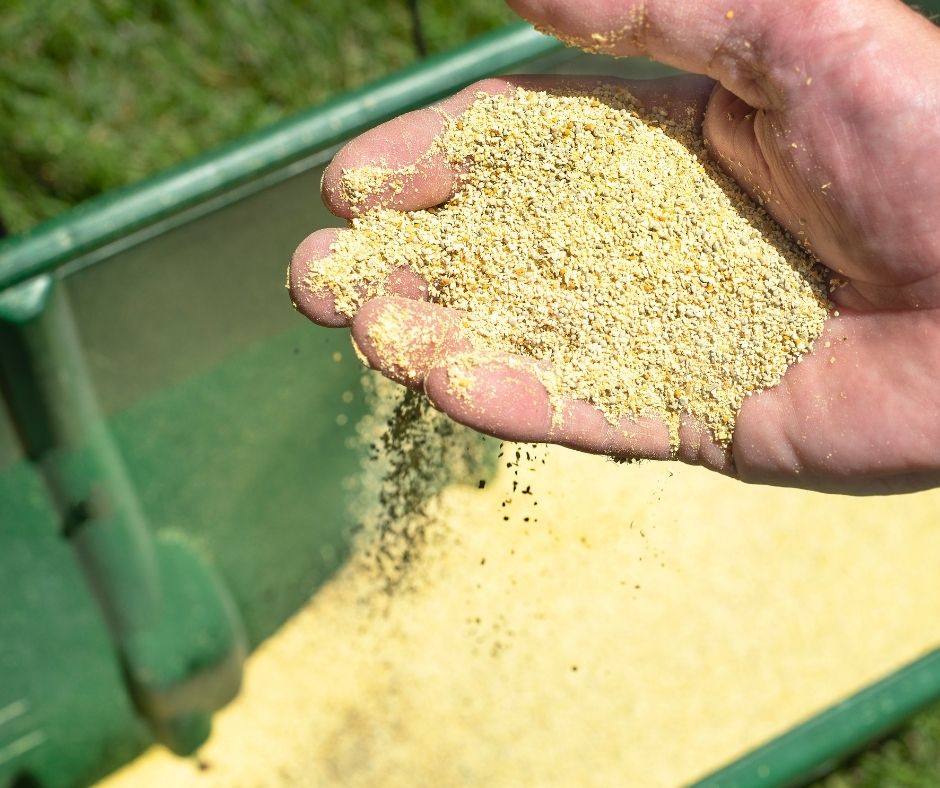Lawn fertilizer and science.
If you start your day with a headache, by all means, do not read what follows unless you are one of those hardcore turf lovers that we love so much.
Yes, it’s all going to be a whole lot more sciency from this point.
We always swore not to be like that, but we will try to appeal to the turf nerds for once. So, dear brothers and sisters from Chester County, PA, here is the secret recipe for lawn fertilization.
Lawn Fertilizer 1:1
Typically, you need to feed a plant with different stuff for that plant to thrive. This is why your turf needs lawn fertilizers to nourish the plants.
So far, it’s quite simple, right?
If you go to any retail shop to buy lawn fertilizers and read the recommendation on the packaging, you will see that values are given in pounds of nitrogen (N) per 1,000 square feet.
What does that mean?
It means that you need to calculate your surface area first.
Yep. You read that well.
If you do not know the surface area you have to cover, you will struggle to calculate the right amount of lawn fertilizer.
If you have no clue how to do that, try to measure your yard’s length and width without the walkways or driveway, and multiply them together.
Unless you live on a property shaped like a circle, that simple rule should do it. What is important is to measure only the areas covered with turf.
Now that you have determined your lawn’s surface area, it’s time to push the second gear.
Nutrition is the Key, Baby!
Your lawn needs three things: Potassium, phosphorus, and nitrogen.
Although you need to make sure your lawn is not deficient in one of the three values – we recommend a soil analysis for that – Nitrogen or “N” is the secret of your green color.
Nitrogen promotes the production of chlorophyll that is essential for photosynthesis.
It is what you need to gauge in your fertilizer. If you give too much nitrogen to your lawn, you risk burning it. In other words, you need to pay attention to what you do.
Essentially, what you need to determine is the percentage of nitrogen (N) in your lawn fertilizer.
Here is the deal:
The standard rate of nitrogen in your fertilizer that your lawn needs should be one pound of N per 1,000 square feet. That’s the general rule.
If you check the lawn fertilizer bag, you will see the percentage of nitrogen, phosphorus, and potassium.
If you buy lawn fertilizers from retail stores, they are usually high in nitrogen content because people like green turfs.
The critical value to check is your NPK value:
- N (nitrogen)
- P (phosphorus)
- K (potassium)
If you want to determine the percentage of nitrogen in a bag, take the first number (N) appearing in your NPK values and divide by 100.
For instance, if your NPK values are 18-8-10:
Take 18 and divide by 100.
The result is 0.18 nitrogen (or 18%)
You are now ready to determine how much lawn fertilizer you will need to apply.
Lawn Fertilizer Application
All you need to do is take the amount of lawn fertilizer you need to achieve the right volume of nitrogen required and multiply by the surface area you have calculated previously.
It’s not rocket science.
To determine how many pounds of lawn fertilizer you need for 1,000 square feet.
If we go back to our example above, then take 1 pound and divide by 0.18 N.
The result is 5.55 lbs of 18-8-10.
In other words, 5.55 lbs of that bag should be applied on 1,000 square feet.
Assume you have a 4,000 square feet surface area, take 5.55 lbs divided by 1,000 and multiply by your surface area of 4,000 square feet.
Ultimately, you need 22 lbs of your lawn fertilizer for your surface area,
The best way to apply lawn fertilizer is to split applications. We usually make three split applications to ensure adequate feeding. Do not overfeed your lawn to avoid killing it.
Always keep the last fertilization later in the year – It’s usually before we reach Thanksgiving in Chester county, Pa.
It will help your lawn during the winter.
More Food for Thought
Congratulations if you read this and did not fell asleep.
Before we go, as you are now part of the inner circle of those who know more now than others, we want you to remember a few things.
Before applying a lawn fertilizer, check what your soil needs. Do a soil analysis is essential to determine the nutritional elements needed. So, pick up a test kit.
If nitrogen is good for your green color, phosphorus will promote your lawn plant’s root development. Potassium will help your lawn resist disease and natural environmental aggressions. Therefore, look at those values too.
There are different ways to apply lawn fertilizer, either with granules or liquid applications. Both have benefits and drawbacks. If you are unsure, subscribe to our newsletter or Contact Us to learn more.

